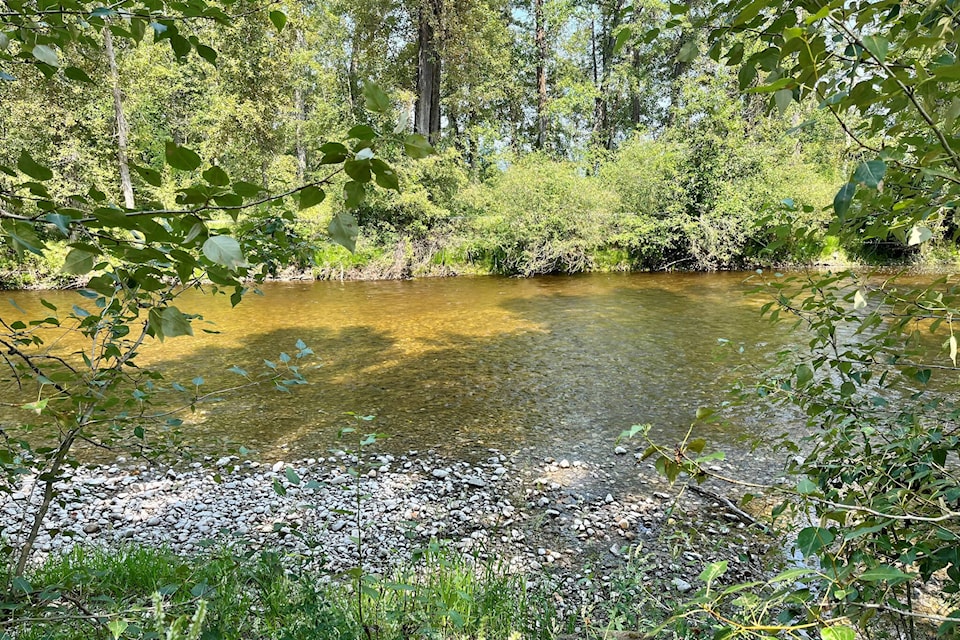There is no end in sight to the ongoing drought conditions facing the Okanagan Valley.
The latest update from the water science specialist for the Okanagan Basin Water Board, Sandra Schira, cites significant concern the drought that plagued the valley for more than half of 2023 will continue into this summer.
The drought is attributed both to the lower-than-average snowfall levels over this past winter, the current below-average snowfall accumulation, and ongoing less-than-average rainfall levels in recent years.
In Schira’s update to the OBWB on the agenda for its May 7 monthly meeting, her report cites the provincial snowpack is at the lowest level seen since at least 1970, meaning it is unlikely significant recovery from the 2023 drought will occur.
The average snowpack in the Okanagan as of April 22 was 39 per cent of normal; a value of 50 per cent would mean the snowpack is at half of what is expected this time of year compared to historic BC River Forecast Centre values.
Brenda Mine was at zero per cent, making it the earliest on record since 1992 when that site was snow-free.
Any hopes of a season-ending surge of snow accumulation in April have been minimal, as most snow monitoring sites have been trending downward as the snowmelt begins.
The report also notes at no point this winter was the average snow pillow reading for the Okanagan at or above normal.
For example, the snow pillow measurement for Mission Creek, the largest tributary feeding into Okanagan Lake, was around 60 to 80 per cent of normal.
“The snow levels are not just low, but the melt is occurring several weeks earlier than normal,” states the report.
“This plays an important role in the timing of water availability for both humans and ecosystems.”
As for hopes of significant rainfall this spring and summer to alleviate drought concerns, the report points out of late the Okanagan has experienced less than historic rain levels both in the overall year and during summers.
“It will take a long and significant period of rainfall to avoid the continuation of the 2023 drought into summer 2024,” the report concludes.
Further amplifying the Okanagan drought concerns, Anna Warwick-Sears, executive director of the OBWB, says in her report to the water board for the May 7 meeting that the $100 million Watershed Security Fund by the province in 2023 needs to be expanded.
Structured like an endowment fund, the current investment level will make available $3 million to $5 million a year for the restoration and maintenance of B.C.’s primary water source areas.
She calls that “far short of what is needed,” recommending the water board send a letter to Minister of Water, Land and Resource Stewardship Nathan Cullen reminding him of the high costs and needs of Okanagan communities, and urge the government to either increase the endowment or create an alternative funding source.
Warwick Sears also made a presentation on April 18 to the federal government standing committee on environment and sustainable development, citing examples of how extreme weather is threatening Okanagan water supplies and ecosystems.
Among the factors she noted:
• The floods of 2017 and 2018 cost billions of dollars in damages to homes and infrastructure, including highways
• The McDougall Creek wildfire came close to destroying the multi-million dollar Rose Valley water treatment plant in West Kelowna
• Extreme cold in January 2024 following unseasonably warm weather killed 90 per cent of the valley’s wine grapes
•B.C.’s snowpack is currently at historic lows, which will challenge communities to provide adequate water supplies for agriculture and domestic uses while maintaining sufficient flows for fish in streams
• Extreme fire danger threatens the water supply areas of Greater Vernon and District of Lake Country, placing drinking water supplies at risk for about 90,000 residents as well as millions of dollars of agricultural production
Warwick Sears also used the opportunity to reiterate the need for more funding to counter the potential threat to local lakes of invasive zebra and quagga mussels becoming established in B.C., another visceral threat to our domestic water supply.
She told the committee a recent study by the province found invasive mussels could cost the B.C. economy more than $139 million annually, and threaten decades of work done by the Okanagan Nation Alliance to revive the Okanagan sockeye salmon population, which accounts for 80 per cent of sockeye in the Columbia River system.
“Although I was given only five minute to present, there was an extended Q&A,” Warwick Sears stated.
“The committee was made up of Liberal, Conservative, NDP and Block Quebecois MPs which seemed to prompt some partisan comments.
“However, there were good questions and I had time to elaborate on the urgency of our issues.”
READ MORE: Snow pack gone at Summerland Reservoir
READ MORE: West Kootenay wildlife rely on a disappearing snowpack
